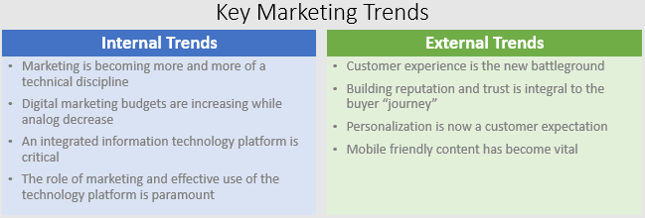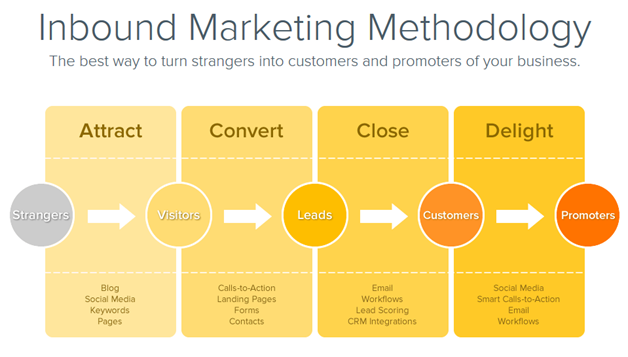In some form or other, almost every aspect of our daily lives and the products and services we use is transitioning rapidly from "analog" to "digital." The business environment and challenges we face to be successful are therefore also constantly and quickly changing.
For small and medium-sized businesses to try and keep ahead of the curve and position themselves for future success, it's an overwhelming challenge.
The modern marketing era is a very relevant example of change, and the importance of adopting this change for business development and success is vital for future health and, ultimately, for the survival of a business.
Traditional Marketing
Most business owners know they must advertise to market their company and their value proposition. This activity forms an expense that makes up the marketing budget. When there's no marketing investment, a business gradually sinks into oblivion.
With a traditional analog marketing campaign, deciding where the funds are allocated is pretty straightforward - trade magazines, radio spots, maybe some TV, etc. However, it's been almost impossible to directly attribute any new business that's won straight to a specific element of an analog marketing campaign.
Business owners generally don't like investing in areas where it's difficult to calculate the return. Because the ROI for traditional marketing is inherently cloudy, it's been very difficult to effectively target or maximize the return of analog marketing expenditures.
Transition Phase to Digital Marketing

The hype and publicity surrounding business enterprises' latest digital marketing techniques are overwhelming. However, mainly because o the legacy issues associated with analog marketing and the difficulties calculating returns on investment, marketing expense, and strategy has its fair share of skeptics among small business owners. Now, faced with the prospect t of digital marketing, there's a requirement to learn new techniques and use new platforms for distributing marketing material. Mostly, small b businesses are unfamiliar with these techniques and how to use social media platforms for content distribution effectively.
As you'd expect, the less familiar you are with a new strategy or investment opportunity, the more hesitation there will be before going down such a path. This may be especially true for marketing-related expenses due to the legacy issues of calculating the returns on investment associated with analog marketing.
In short, the small business owner is faced with jumping out of the frying pan of analog marketing and into the fire of digital marketing and is faced with an uncomfortable dilemma:
Do nothing - wait and see
Jump in and see what happens
Continue with legacy "analog" marketing strategies
Start careful research and figure out a plan to try and enter the fray
Of course, no investments should be made without a plan, and this investment philosophy must include the marketing budget and all other assets. So, to properly consider investing in digital marketing for small businesses, a significant investment of time is required to understand the field and develop a plan. This is usually time a business owner doesn't have, and even if he did, the subject matter will likely be outside his expertise realm. As a result, and despite perhaps knowing better, the business owner does nothing to learn or understand modern digital marketing techniques and strategies, jumps in without a plan or continues with a legacy analog marketing strategy. Unfortunately, none of the e options are favorable for the future of a business.
Inbound Digital Marketing

Firstly, implementing an inbound digital marketing strategy should be one of the highest priorities of any business enterprise expecting a sustainable future. Secondly, it can only be fully and successfully implemented if an integrated information technology platform has been deployed.
An inbound digital marketing strategy is contingent on an "opted-in" email contact list. If an enterprise doesn't have its customer and prospects' email addresses, it must collect and place them into a Customer Relationship Management (CRM) platform such as Salesforce, MS Dynamics, or one of the many others available. Building and maintaining this database is vital if an enterprise wishes to enter the digital age of e-commerce.
Inbound digital marketing is 100% dependent on content. About 100 trillion emails were created and sent globally in 2015. If an enterprise doesn't have carefully prepared, engaging, and relevant content, even with a "friendly" audience resulting from an "opted-in" mailing list, the message will not be given the time of day, and the marketing efforts will be poor.
The content is essential, and so is the campaign's strategy. Email marketing campaigns must include "calls-to-action" (CTAs), and the activity resulting from each email campaign must be recorded in the CRM application. Who clicked on what tells n enterprise what the audience is interested in and what the next step needs to be in nurturing that lead through the sales pipeline?
For sure, a digital marketing strategy is not just about blasting emails. Blogging is vital. However, just like emailing, the quality of the blog content is paramount. The target audience will n t read poorly written, irrelevant, or generally uninteresting material. The intent has to be to establish the author as an authority on the subject matter and that the subject matter is relevant and exciting to the target audience.
An enterprise committed to developing exciting content must build its audience, where the various social media platforms become directly relevant. As content is delivered to and read by a wider audience, the objective is to bring traffic back to the target website. Once at the website, visit rs must be converted to leads and nurtured through the pipeline until they eventually become customers. Social media in small businesses and website traffic development go hand-in-hand - you won't cost-effectively have the latter without the former!
Inbound Digital Marketing and the Return on Investment
Unlike traditional analog marketing, the costs and return on digital marketing can be fully quantified. If an enterprise can successfully develop and implement a digital strategy, then the results of the campaigns can be quantified in ways analog marketing campaigns never could be. For example, the following activities are all measurable;
The number of readers of email blasts
Opt-out's
Click-through
Number of blog subscribers
Website visits and where they came from
What site visitors do when they arrive at a website
How long they visit and what pages they visit.
Use of this information is vital to fine-tune and continually improve direct email and blogging activities, providing opportunities and measurable metrics that cannot be achieved with legacy analog campaigns.
Conclusion
Digital marketing has the potential to be significantly more efficient than traditional analog marketing. For example, printing and ending 1,000 promotional fliers involves a gamble that the costs will be covered with profits from new business won.
Preparing and sending out 1,000 emails has a minimal cost and can be scaled to 10,000 emails without a significant price increase. Intelligent use of the data from blogging and emailing campaigns means the strategy can be fine-tuned and continually made more effective.
Remember - efficient businesses ultimately win. A well-planned inbound digs tal marketing campaign is infinitely more efficient than a traditional analog marketing campaign - therefore, longer term, this strategy wins.

